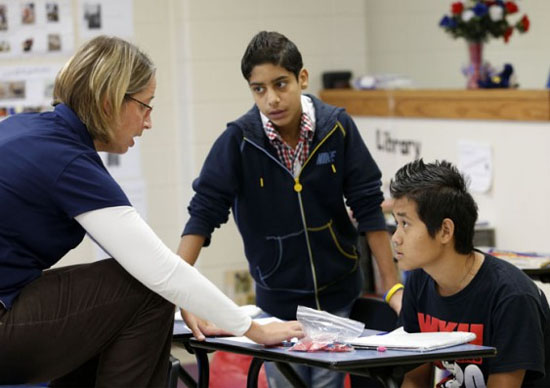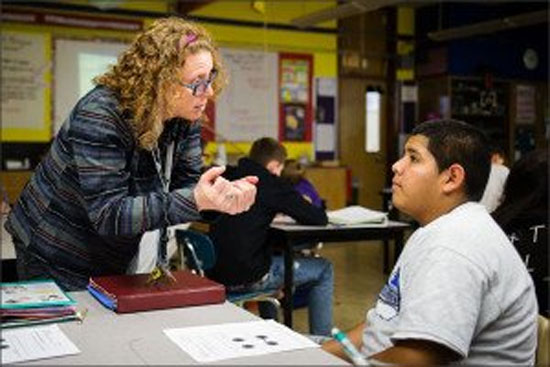Thirty-one percent of the students in Tulsa Public Schools are acquiring English in addition to their other coursework. As of this 11/27/23 regular board meeting “that is 10,395 students from prekindergarten through 12th grade” reported Dr. Grisso, Executive Director of Language and Cultural Services.
The number grows daily with 100 English Language Learners (ELLs) being added each week since late October of this year. A sizeable portion of ELLs in the secondary schools have had limited schooling and/or sizeable gaps in their education. A large number of the enrollees have no previous school records and/or no readily available way to acquire them.
By the end of 2022 TPS received 1,717 new ELLs. Now, near the end of 2023 TPS has received 2,098. Dr. Grisso projects receiving 4,206 by the end of 2024. At the current time, based on current state testing requirements, English language learners make up 10% of the State Report Card.
Only about 10% of the ELLs were not born in America. Some of the ELLs can read, but not in English. All of the ELLs could greatly benefit from the specialized services of English Learning Development (EDL)Teachers. The vast majority of all the students acquiring English are in the classrooms with students whose primary language is English or who have successfully “graduated” from needing the special assistance of EDL teachers.
Unfortunately, there is a severe shortage of EDL teachers. The shortage at the secondary level (19.5 positions) is four times higher than at the elementary level (4.5 positions). Additionally, Oklahoma only offers teaching certificates in English and Spanish potentially limiting the variety of multilingual teachers. It isn’t difficult to see the possible benefit of more teachers with various second and third languages.
The first language of the majority of new ELLs being added to TPS is Spanish with most of those students coming from Mexico or Venezuela. There is a growing number of students from Micronesia, a subregion of Oceania, whose native language is Chuukese.
Here are a few additional facts.
- A student with virtually no English should become proficient in English in seven to ten years.
- Newcomers and long-term learners (five years in the program) are the two largest ELL groups.
- Younger students generally acquire English faster than older students.
- Progress in language acquisition tends to plateau in middle school.
- It is difficult to determine which ELLs also have a learning disability.
- Students who come to TPS at age 17 or 18 will likely “age out” [not complete graduation requirements before the state established end of public education – currently age 21] and therefore not graduate.
- Once English language learners master English they tend to be the better students.
TPS’s Interim School Superintendent Dr. Johnson calls all of this “a beautiful challenge”. Through it all students defined as “multilingual learners” are making progress acquiring English. Multilingual learners are students who score “below a composite proficiency of 4.8/6.0 on the ACCESS 2.0 test”, an English language proficiency test.
Goal monitoring reports (see table below) presented at this board meeting showed that the percentage of K-5 multilingual learners meeting their annual English language proficiency growth targets went from 32% in May 2021 to 44.7% in May of 2022 and to 45.9% in May of 2023. This exceeds the 45% target goal set for May of 2026. Clearly that goal was attainable, but not even close to aspirational!
The percentage of 6-8 grade multilingual learners meeting their targets is also improving, but at a predictably slower rate. Recall that “Progress in language acquisition tends to plateau in middle school”.
For this group of students, the percentage meeting their annual English language proficiency growth targets went from 19% in May 2021 to 20.5% in May of 2022 and to 22.2% in May of 2023. The goal is to go up to 25% by 2026. Given the data and the known history of language acquisition the 25% goal is attainable and realistic.
| Growth | May 2021 | May 2122 | May 2023 | May 2026 | |
| K-5 grades | 32% | 44.7% | 45.9% | 45% | |
| 6-8 grades | 19% | 20.5% | 22.2% | 25% |
The research on setting realistic versus aspirational goals is mixed. Some results suggest that people push to get to the goal. Other results suggest that when the goal is unrealistically high people quit trying. It might be worth setting a somewhat higher goal with a “carrot” or prize at the end such as a pizza party or game day especially for the 6-8 grade learners.
The monthly budget update recently instituted by Chief Financial Officer and Chief Operating Officer Robles followed the examination of the Goal Monitoring Reports. The update showed that TPS has more money available this year than projected. The plan is to add $17 million to the rainy-day fund. This plan provides the school with the money to get ready for the beginning of school year 2023-2024 before the annual funding starts coming into the district.
On a side note, on 11/17/23 CFO/COO Robles announced that he intends to leave TPS at the end of January 2024 to pursue studies and opportunities through the Yale School of Management Fellowship for Public Education Leadership. He joined TPS in May 2018.
This informative school board meeting ended with board member reports, citizens’ comments, the superintendent’s report and one “other non-routine item”.
Board Member Diamond Marshall praised activities in several of her schools. There were two citizen comments. The first speaker challenged board members to take a “deep dive” into current TPS teacher-tested effective classroom discipline and take advantage of free discussion facilitating services offered by the speaker. The second speaker challenged the board to eradicate poverty because “all problems come from poverty”.
In her report Interim Superintendent Dr. Johnson challenged all the members of the TPS community to come together to focus on improving school attendance. She rightly noted that chronic absenteeism is a serious issue and that students have to be present to benefit from education. She suggested that everyone reach out to people they know to say that they care about them and about education.
Additionally, Dr. Johnson explained that labels have an impact and shared what she hoped is a beneficial re-framing of the alphabetical rating of schools as follows:
F = Focus
D = Developing
C = Competitive
B = Breakthrough
A = Accomplished
The final business item was a board vote to enter into a “resignation agreement with Patricia Lewis”. That item passed with a six to zero vote. Board Member Dr. Marshall was not in attendance at this meeting.
The next regular TPS Board Meeting is Monday, December 11 at 6:30. The presence of the public at these board meetings lets the board know that their work is not going unnoticed, that the quality and type of education at TPS is important, and that the public cares about the specific decisions made by specific members of this powerful board.
Note that three school board seats are up for election this year: District 2 currently held by Diamond Marshall, District 5 currently held by John Croisant and District 6 currently held by Dr. Griffin. Depending upon the viewpoints of the people elected, the TPS board could experience large and beneficial changes.


